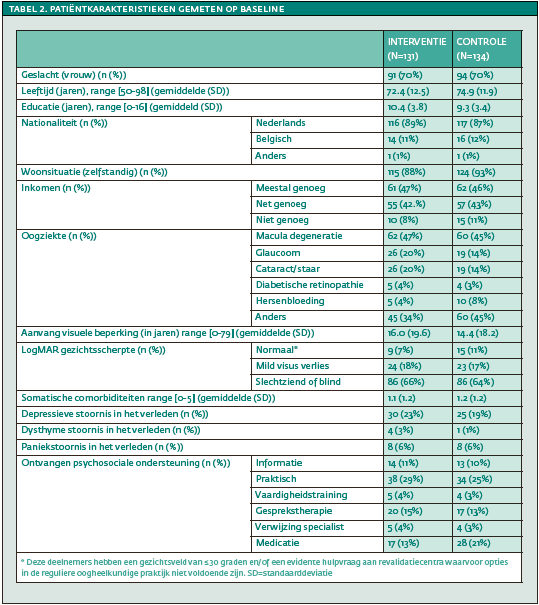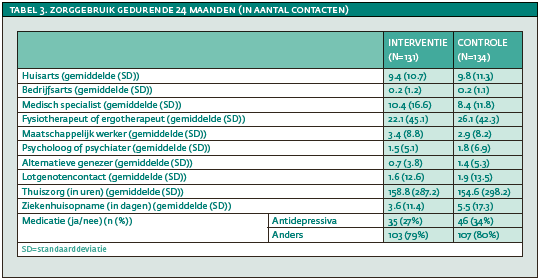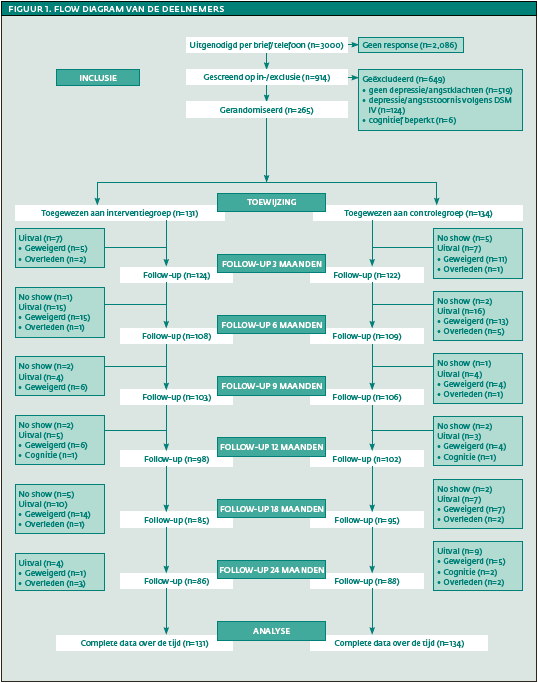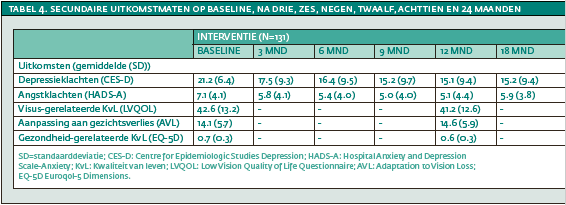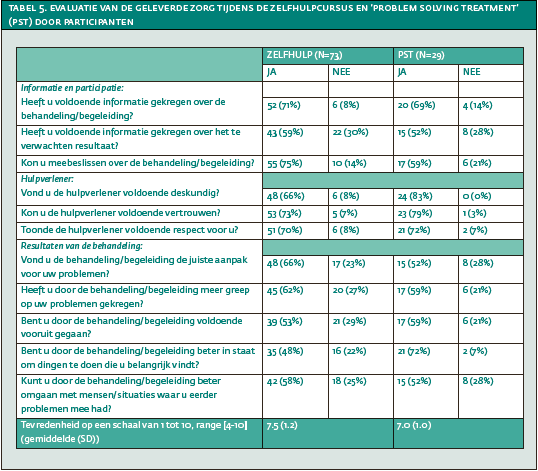Introductie
Volgens de World Health Organization (WHO, 2010) zijn wereldwijd ongeveer 285 miljoen mensen visueel beperkt, van wie 65 procent vijftig jaar of ouder is. Klachten van depressie en angst komen veel voor bij visueel beperkte oudere volwassenen. Ongeveer een derde van hen ervaart subklinische klachten van depressie en/of angst (Augustin et al., 2007; Evans, Fletcher & Wormald, 2007; Lotery et al., 2007; Van der Aa et al., 2015a)1111924. Zeven procent heeft een daadwerkelijke angststoornis (Van der Aa et al., 2015a), en vijf tot zeven procent heeft een depressieve stoornis volgens de DSM-IV (Brody et al., 2001; Horowitz, Reinhardt & Kennedy, 2005; Van der Aa et al., 2015a)713. Deze percentages zijn substantieel hoger dan de prevalentie in de algemene oudere bevolking (Beekman, Copeland & Prince, 1999; Bryant, Jackson & Ames, 2008)28.
Zowel depressie als angst worden geassocieerd met een aanzienlijke ziektelast. Zij kunnen al in een subklinisch stadium leiden tot een


